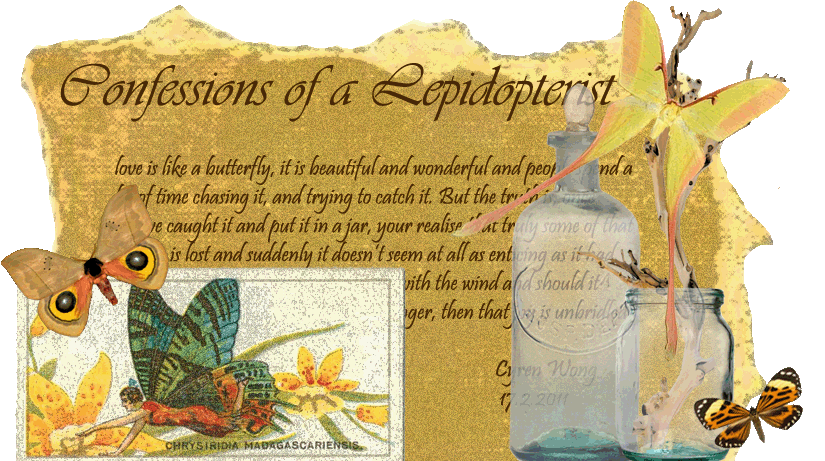The Queen Alexandra's Birdwing Butterfly (Ornithoptera alexandrae) is the largest butterfly in the world. It is also one of the few species of butterflies that are truly protected by law. The butterfly, which was named in 1907 in honor of Queen Alexandra of Denmark by Walter Rothschild, measures a whopping 13 inches from one wing to the other and can only be found in a very restricted eco-zone in the coastal rainforests of Oro Province, Papua New Guinea. The butterfly is listed on the Appendix 1 of CITES, which makes all trade of the insect illegal. Specimens of the Queen Alexandra's Birdwing can fetch up to 10,000 US dollars on the black market. Despite this, the main threat to the butterfly's population is arguably not collectors, but the felling of old growth rainforest for plantation land for the palm oil trade which is slowly cutting into the meager 100 square kilometers of rainforest in which the butterfly is exclusively found. The population of Queen Alexandra's Birdwing Butterflies also faced a significant blow during the eruption of Mount Lamington in the 1950s, which destroyed a significant portion of the species' former habitat.
Like all birdwing butterflies, the Queen Alexandra's Birdwing displays extreme sexual dimorphism. The female, which can reach a wingspan of 13 inches, body length of 3 inches and a body mass of 12 grams (all enormous measurements for a butterfly) is predominantly brown in color with cream or white markings arranged in rows on its wings while the much smaller male displays wings that are an iridescent blue-green in color and have a wingspan of approximately 9 inches or smaller. Male butterflies sometimes develop gold spots on their hind wings and this "atavus" form is often considered to be one of the most spectacular of all birdwing butterflies.
Female butterflies lay approximately 27 eggs throughout their lifetime on plants of the genus pararistolochia. The larvae imbibe aristolochic acids from the plant's leaves which in turn functions as a potent vertebrate poison that defends them from many predators. The life cycle from egg to pupa takes about 6 weeks to complete. Pupation generally lasts for a month, and the butterflies emerge from their chrysalis only in the early mornings when the sun is not yet at its peak and the air is humid because the enormous wings may dry out before they have fully expanded if the humidity drops. and adult butterflies can live for an average of three to four months. Because of their toxicity and large size they have very few predators aside from large Orb weaving spiders (Nephila spp.) and some birds which have developed methods for eating poisonous butterflies. Adult butterflies are strong fliers and rarely stray from the canopy making them rather difficult to observe. In fact, the first butterfly to be discovered was actually taken with the aid of a small shotgun by Albert Stewart Meek (a collector under the employment of Rothschild) but subsequent specimens were obtained from captive bred stock after Meek discovered the early stages for the species.
If you like what you see, you can check out more of my artwork, updated regularly at:
Artist: http://cyrenization.deviantart.com/

